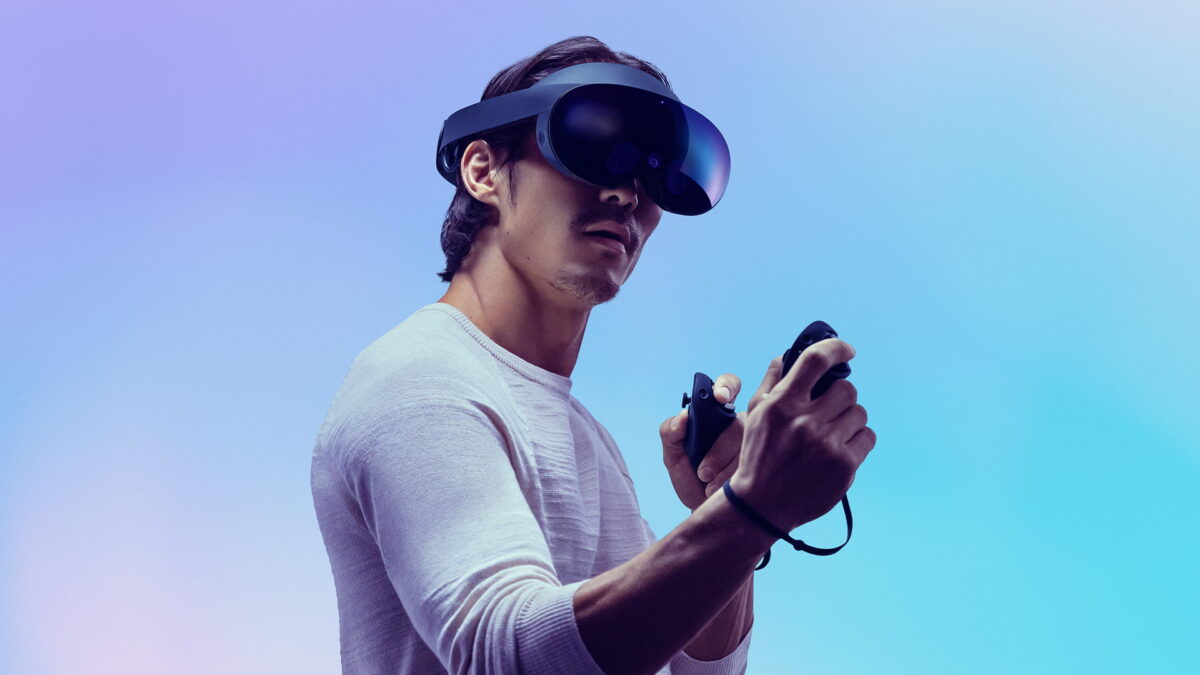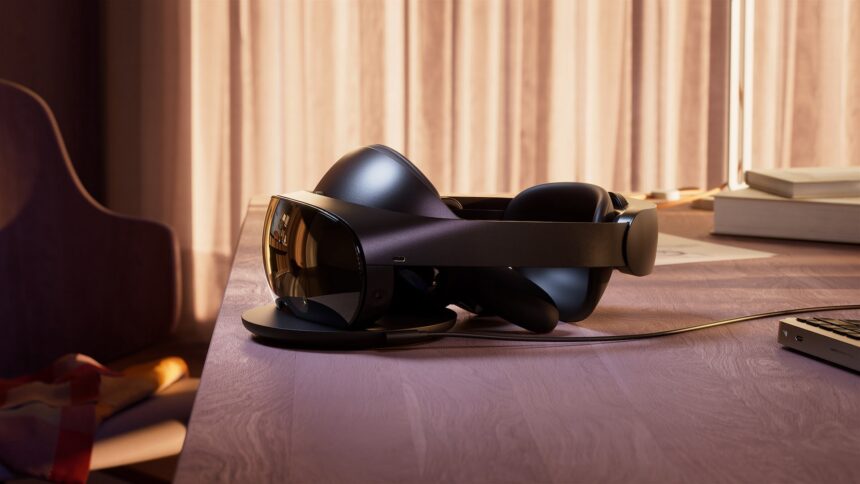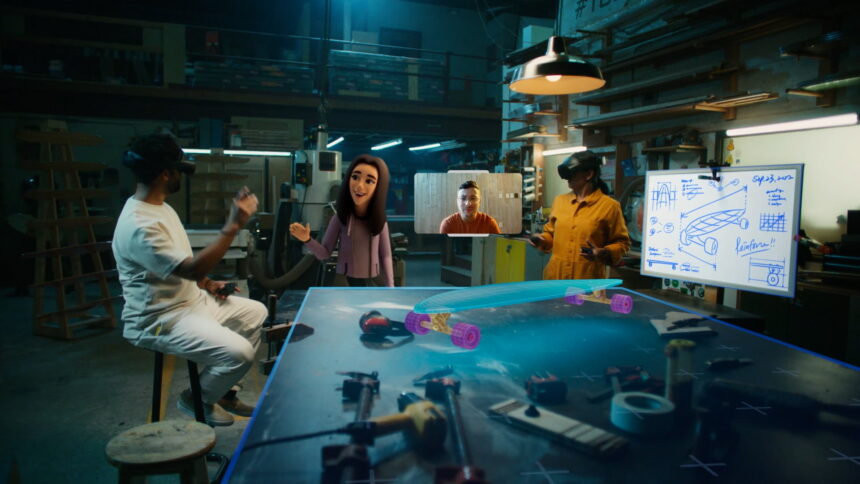Quest Pro: The first reviews from early-access users

Some selected US press members had the chance to try out Quest Pro. This is a summary of their first impressions so far.
Meta (officially) introduced the Quest Pro on October 11 during Meta Connect 2022. The new product line is aimed at enterprise and professional users rather than potentially competing with the Meta Quest 2 (review) as a consumer device. Meta Quest Pro costs $1,499, is already available to order, and ships on October 25.
More information can be found in my article introducing the Meta Quest Pro. Let's move on to the hands-on.
Content
UploadVR: Great new features in a slim form factor
David Heaney starts by describing his visual impressions. The resolution is slightly higher than in Meta Quest 2, but texts and user interfaces look sharper thanks to the new pancake lenses. The headset achieves a noticeable improvement in contrast and colors. The picture is somewhere between LCDs and OLEDs in terms of quality and offers darker blacks and brighter colors than Meta Quest 2 and even the Pico 4 (review).
The field of view is noticeably wider, at least, wider than any other Meta headset before.
Heaney comments negatively on the passthrough. Those who expect the digital image of the environment to look like the real thing will be "sorely disappointed." In most demos, the passthrough would be grainy and the colors washed out, "like a video recording taken on an old phone camera."
The image was "not that much sharper than Quest 2's," he said, and did not allow tasks like reading a smartphone display or seeing the letters on a keyboard. Heaney also tried a firmware demo with "significantly sharper" passthrough, but the passthrough mode ran at a lower frame rate.

Meta Quest Pro with charging station. | Image: Meta
The reviewer criticizes that Meta only includes partial light blockers, as they do not shield the lower area of the field of view. A Facial Interface with complete light blocking is a separate purchase.
Heaney is positive about the comfort. After fitting, the headset doesn't feel any heavier than a hat. However, he could not make a judgment about longer use yet. The editor welcomes the fact that the new Touch Pro controllers do without tracking rings. This opens up new scenarios for hand-to-hand interactions.
He was "blown away" by the improved haptics. The haptic feedback felt more precise than with the Sense controllers of the Playstation VR 2, at least in the demos shown. However, a final verdict is still pending. The hand tracking is also noticeably better than that of the Meta Quest 2. He is surprised that Meta does not sell the Quest Pro without a controller.
Road to VR: Dawn of the Mixed Reality era
Ben Lang is surprised that the resolution is almost identical to Meta Quest 2. Meta Quest Pro is thus only suitable for reading or as a monitor replacement to a limited extent. Lang sees advantages of Meta Quest Pro over AR headsets with transparent optics. The larger field of view and the opacity of virtual objects make the latter feel more real.
The disadvantage is that the world is rendered in a much lower resolution. Overall, the passthrough is not perfect and shows artifacts that manifest as color fringes around certain objects, for example in the form of a faint color-muted outline. This doesn't ruin the colorful Mixed Reality, but it would be nice if this were fixed in future headsets, Lang writes.
The editor does not yet want to comment on the quality of the displays and optics because he could not try out the headset thoroughly enough.
Lang welcomes the fact that the new controllers track themselves independently. The tracking rings are gone, so they no longer bang against each other. In addition, the controllers are effective outside of the field of view of the headset cameras. A new pressure sensor under the beveled thumb rest, in combination with the trigger button, allows for a natural pinch gesture, which Lang liked.
He was not convinced by the pressure-sensitive stylus attachments, or more precisely, their implementation. The physical writing surface detected by the headset drifted and the resulting discrepancy disturbed him when writing. The new haptic motors did not impress him either.
The Quest Pro is undoubtedly more compact and balanced than any other Meta headset, he said, even though it is heavier than Meta Quest 2 (1.5lbs vs. 1.1lbs). Lang only wants to make a final verdict on the wearing comfort after wearing it for a longer period of time. Lang also likes the automatic IPD adjustment and the fact that you can set the distance to the eyes. Eye tracking tells you the ideal lens distance.
Lang calls the eye and face tracking "very impressive", not least with regard to the range of simulated facial expressions.
The Verge: More of a developer kit than a B2B dream device
Adi Robertson calls Meta Quest Pro a "cutting-edge headset looking for an audience." In practice, he says, the headset feels like a sophisticated developer kit, geared more toward testing next-gen technologies than meeting specific needs. The pragmatic benefits for many companies remain questionable, he said.
Beyond that, there is a significant degradation, he said. Battery life is now only one to two hours instead of two to three hours. Recharge time is about two hours, and the battery in the back of the head mount cannot be replaced, which limits the flexibility of the device, especially for businesses, Robertson says.

This is how Meta envisions mixed reality collaboration. | Image: Meta
In terms of comfort, he says Meta Quest Pro is a "major step forward." The headset rests smoothly on the head and the electronics have given way to a lighter layer around the face. In the approximately 90 minutes Robertson wore the headset, the device was light enough not to be distracting.
The face tracking didn't capture all signals (tongue movements, lip bites) during the trial, but the eye-tracking supported dynamic foveated rendering. Robertson had nothing to criticize about the passthrough.
Although Meta is working with Microsoft and Accenture, she said she was shown almost only casual games and tech demos. Horizon Workrooms was some of the few exceptions but still didn't feel like a viable virtual office. The "admirably clear" displays still aren't high-resolution enough to read small text in the browser without difficulty, she said.
"The whole situation suggests that Meta is taking breakthroughs technologies like passthrough AR and eye-tracking out for an early spin, trying to see what people do with them before they come down in price enough to integrate into a cheaper product," Robertson writes in her conclusion.
CNET: The best of the old or the beginning of a new?
Scott Stein, after an hour or two of use, says that Quest Pro feels more like AR headsets like Hololens 2 instead of classic VR headsets. Kind of like if Meta Quest 2 and Hololens 2 married and Meta Quest Pro was its child.
During his hands-on trial, Stein appreciated that his headset fit perfectly under the headset and that the headset doesn't shield him from the world because the viewing periphery remains unobstructed. The experience, he said, is like smartphone AR, but in full 3D.
With Meta Quest Pro's mixed reality, it feels like you never left the room. "Instead of being taken to virtual places, the virtual things came to me," Stein said, describing the experience.
The expanded field of view and slimmer pancake lenses made Meta Quest Pro feel more like a visor and sink down onto his face just as effortlessly. The display is better than that of the Meta Quest 2 device, he said, and offers darker blacks, but doesn't come close to OLED displays in this regard.
Stein also criticizes the passthrough, which lags several levels behind everyday viewing in terms of sharpness.
The face tracking is "a little uncanny" and it remains to be seen how realistic it becomes. The haptic feedback of the new controllers is much improved and more subtle than in Meta Quest 2, reminding Stein of the Sense controllers of the Playsation VR 2. Quest Pro feels like a refined, luxury VR headset, but at the same time like an AR headset. The question, he said, is what comes next and whether it's the right time to strike.
"As Meta moves toward future AR glasses and other companies arrive to compete next year, it's hard to tell whether the Quest Pro is the best version of what's been available or the first version of what's to come next," Stein writes.
Tested: Too expensive for end users
For Norman Chan, Meta Quest Pro raises similar questions, especially in light of a possible Meta Quest 3 coming soon. What will ultimately differentiate the two product lines? That is unclear until Meta unveils that device.
Given the high price, it would be difficult to recommend Meta Quest Pro to someone who already owns Meta Quest 2, because the apps are more or less the same and developers will continue to focus on the consumer device.
In terms of technical features, Chan's impressions don't differ from those of his peers. The headset is
- far more comfortable to wear than Meta Quest 2 despite its heavier weight (because the battery is on the back of the head-mount and the housing itself is 40 percent thinner),
- has a comparable field of view (106 degrees horizontal, 96 degrees vertical),
- greater clarity, especially towards the edges,
- a noticeably better contrast without reaching the blackness of an OLED display.
The user's own headset had no problems and fit comfortably under the headset. Further positives are the automatic IPD adjustment and the "very sensitive" feel of the Touch Pro controllers.
The standard refresh rate is 72 hertz, but 90 hertz is possible. Chan did not notice an improved color reproduction. The passthrough was less distorted than that of the Meta Quest 2, but still quite grainy in low-light conditions and far from a high-resolution 180-degree video in terms of picture quality.
You cannot read a book or perceive objects in the distance with it. The smartphone display is also difficult to read. The passthrough is "generations away" from the optics of transparent AR headsets.
Note: Links to online stores in articles can be so-called affiliate links. If you buy through this link, MIXED receives a commission from the provider. For you the price does not change.